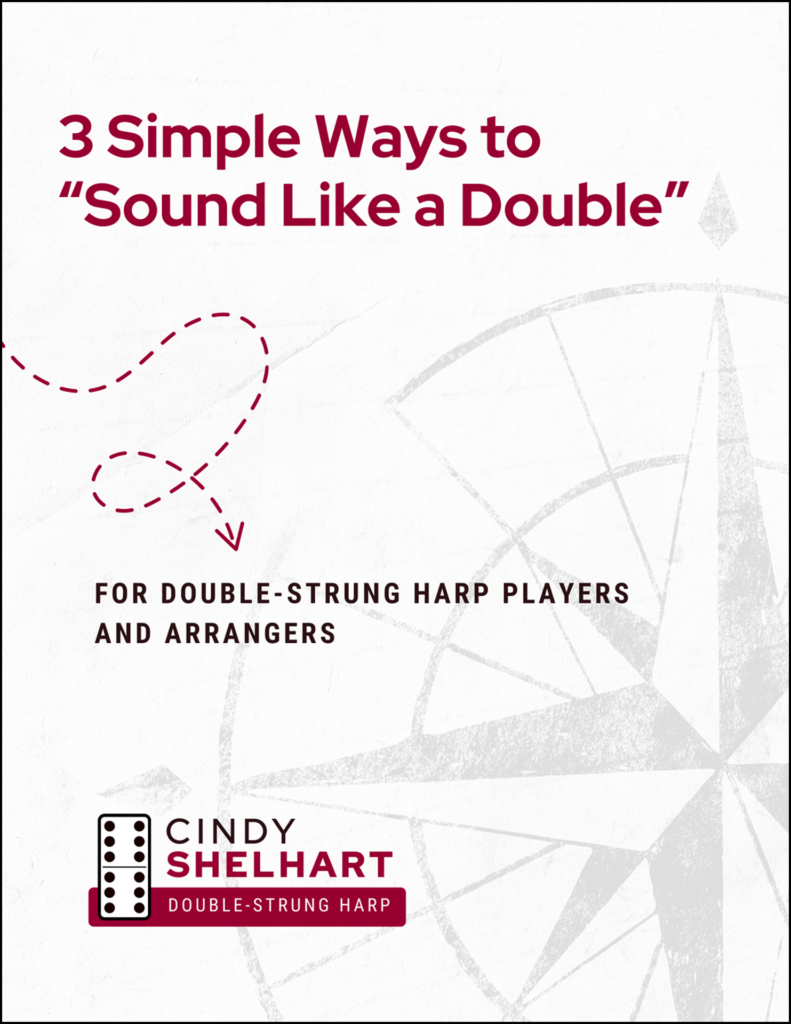Back in November, I had a great time presenting an online workshop for double-strung harpists.
Along with 2 of my brand new holiday arrangements, we also talked about my signature framework for double-strung harp technique—which you might recognize from my DSH method book, Make Mine a Double.
But now, I’m officially unveiling this framework to the world as The Technique Triangle™, as part of The Shelhart Method™ for double-strung harp. I thought now would be a good time to share this with you…so, here’s what it looks like.
About DSH Techniques
Just to be clear, double-strung harp techniques fit into two categories, instrumental and compositional:
- Instrumental techniques (aka performance techniques) train the hands, fingers, eyes, and brain for DSH sound production. You’re actively teaching your body how to play.
- Compositional techniques are used to create music with DSH effects. Despite the name, these aren’t just for composing music from scratch, but also used in lead sheet performance, and in arranging music from other sources.
About The Technique Triangle
- All 3 techniques of The Technique Triangle are used as both instrumental AND compositional techniques.
- Each technique is named for its main job in playing and creating DSH music.
- You can use these techniques to create an unlimited number of DSH patterns—but they’re still based on 1 or more of these 3 DSH techniques, and the same pattern can be used in a variety of ways.
- Also, you don’t need to use all 3 of these technique types in the same arrangement. Using even just ONE of the techniques helps your DSH “sound more like a double.”
Echo Technique
- Echo Technique is the foundation sound of the double-strung harp.
- This melodic technique features the two string rows, tuned in unison; both hands echo the same notes.
Split Technique
- Split Technique serves as the DSH’s problem-solver.
- Also a melodic technique, the hands split similar notes—repeated notes or extended scale patterns—between hands for playing ease.
- Split Technique also includes elements of Echo Technique.
Overlap Technique
- Overlap Technique weaves independent parts together, as both hands overlap in the same range of the DSH to play 2 or more different parts (including accidentals).
- In Overlap Technique, harmony, rhythm, and texture share the stage with melodic elements from Echo and Split Techniques.
More to come
I’ll be sharing more about The Technique Triangle™ and its uses for DSH next year in blog posts, workshops and more. In the meantime, consider this your invitation to subscribe to my mailing list for all the latest news & events in the world of double-strung harp!


This is great! I hope you share this as a video in the future on YT!
Thanks, Lisa! Definitely on my YouTube list!
[…] I created The Technique Triangle™, the easy way to make your double-strung harp “sound more like a double,” I literally based it […]
[…] they’re now known as The Technique Triangle, as part of The Shelhart Method. (I also wrote a blog post recently introducing The Technique Triangle, and I’ll put a link to that post in the show notes.) If you’re new to these […]